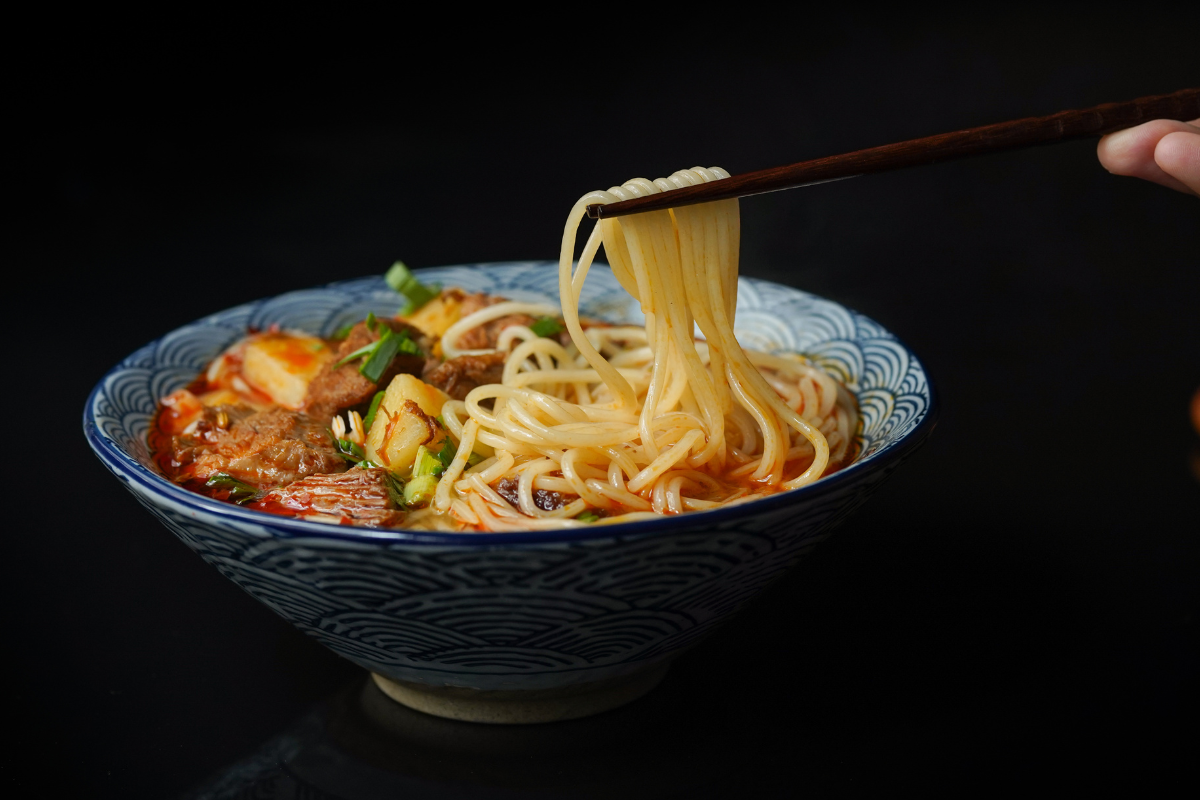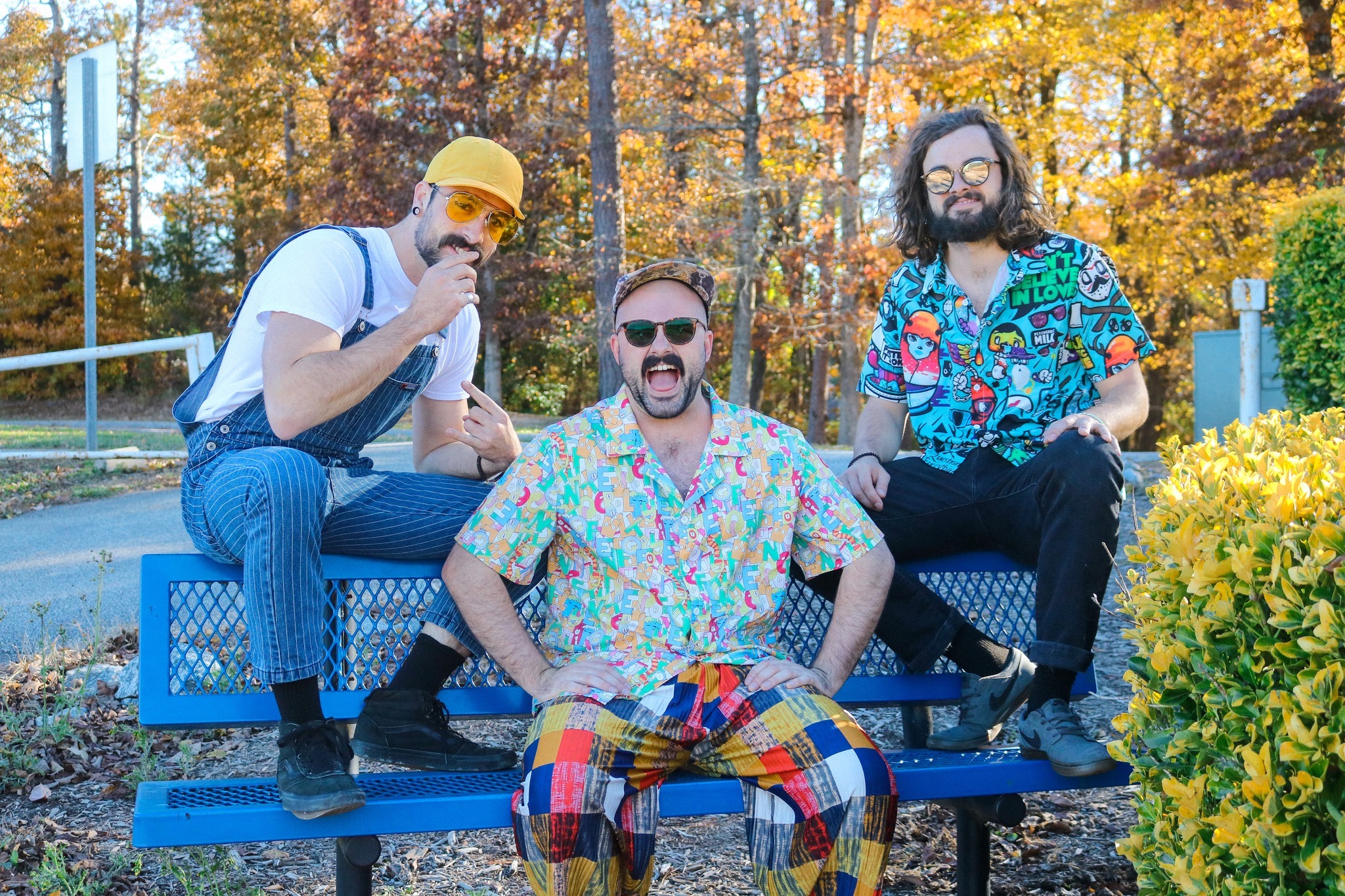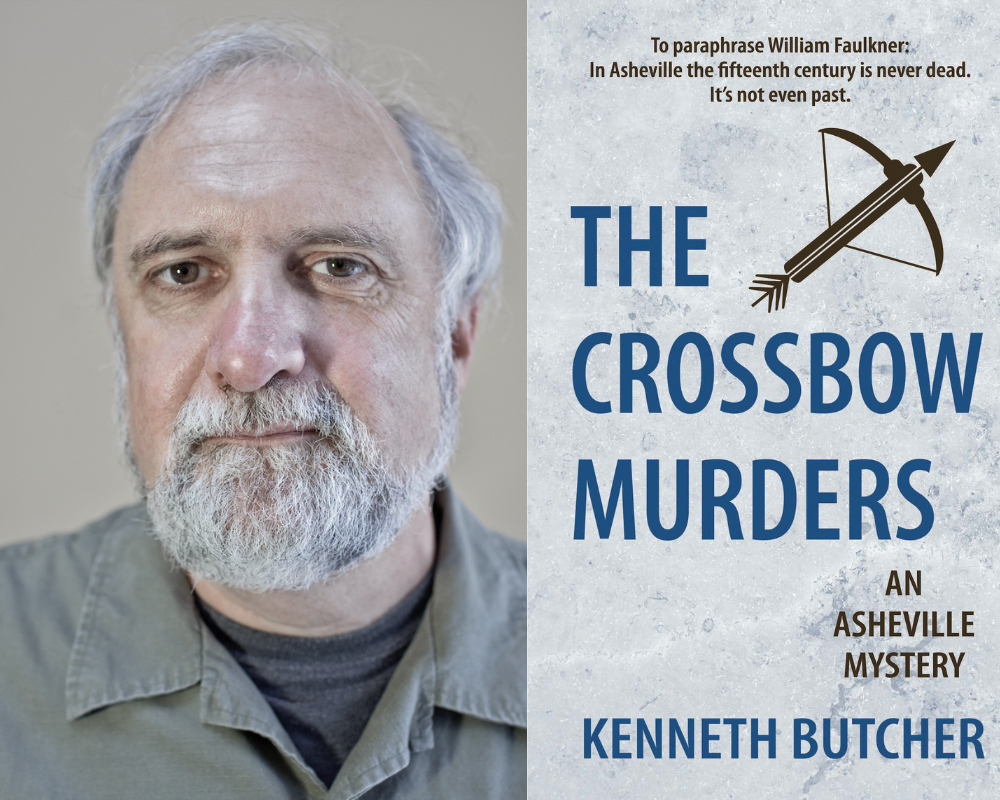Local fiber artist is the latest revivalist of punch needling

THE “PAINTER” WHO PULLS NO PUNCHES
Penny Baugh of Henderson County.
Portrait by Evan Anderson
One of Hendersonville fiber artist Penny Baugh’s favorite activities is punching, but lest readers imagine her with a pair of boxing gloves, the reality is a bit more refined. It’s a variation on traditional rug hooking that allows practitioners to create detailed designs difficult to achieve with usual hooking techniques. “I discovered punch needle several years ago,” Baugh says, “and loved the idea of making pictures using [this] format.” Some of her designs are highly figurative, nature-themed creations; others are more abstract and play with color and shape in contrasting patterns. “It ends up a lot like painting,“ Baugh says, “so I can use a variety of designs.”

Rustic details add visual interest to a small hanging piece.
Photo by Evan Anderson
A cross between embroidery and rug hooking, punch needling requires a special needle that brings yarn just under the fabric surface, rather than all the way through to the other side. It’s derived from a centuries-old Japanese stitching style called Bunka and was first brought to the United States by Japanese women accompanying their returning American GI husbands at the end of World War II. It gained a stronger foothold in 1995 thanks to a Vermont rug hooker named Amy Oxford, who suffered from carpal-tunnel syndrome and tendonitis after years of rug hooking. Oxford invented a larger, more easily handled needle that became the gold standard of punch needles.

Desert Blue Sky
Photo by Evan Anderson
Among the enthusiasts was the noted Canadian textile artist Arounna Khounnoraj, who brought the practice of punch needling firmly into the 21st century. Four years ago, Knounnoraj, co-owner of the Toronto art studio and shop Bookhou, demonstrated the technique in an online video that went viral; she has, in the past two years, published two books on punch needling and related topics: Punch Needle: Master the Art of Punch Needling was released in 2019, and Visible Mending: A Modern Guide to Darning, Stitching and Patching the Clothes You Love came out last year.

Aztec Dreaming
Photo by Evan Anderson
Thanks to the push from Khounnoraj, Oxford and her husband found themselves selling up to 2,000 of their punch needles every year to some 53 countries, with sales increasing by more than 600 percent.
Punch needling soon came to be compared, as Baugh discovered, to painting with yarn. “I draw designs onto weaver’s cloth,” she explains, “thread my needle, and punch away. Most people punch the thread so that they have loops on the ‘front’ of the fabric. I do reverse stitching so that the loops are on the ‘back’ on the fabric, so that the back becomes my front.” Indeed, one of the attractions of punching for some needlers is that, in essence, two works are created simultaneously on both sides of the cloth — one side with a defined design, and the other a rainbow of colored loops, like a traditionally hooked rug.

Button, Button
Photo by Evan Anderson
To continue the painting analogy, Baugh’s punch needles, in a variety of sizes, make working with yarn much like a painter wielding a brush, with the yarn threaded through the needle’s handle and out through the sharp metal tip that pierces the open weave of the cloth. Artists and illustrators used to working with brush and canvas find the technique easy and familiar once the basics are learned, and knitters find the ease of color combinations liberating, with no knots to tie and a closer tactile experience with the yarn.
Some of Baugh’s punched designs, like a Halloween-inspired work depicting a whimsical crow wearing a witch’s hat and a bemused-looking pumpkin against a tufted white background, are framed like any artwork, ready for hanging. A group of three black-and-tan-shaded avian figures, perhaps pheasants, peck and strut against a plain beige background in simple black frames.

The artist begins her painterly process.
Photo by Evan Anderson
Baugh is no stranger to working with fabrics in any number of ways. “I grew up in the ’40s and ’50s, and my mother made all my clothes,” Baugh says. “My grandmother made stuffed creatures, like teddy bears, so sewing was a major part of childhood into adulthood.” She doesn’t exhibit or sell her work publicly, “but I do give them away if someone visits and really likes a piece,” she says. “I have such a good time that I love to pass it all along to people who might be interested in doing it.”
Penny Baugh, Hendersonville. To reach the artist, e-mail punchneedle27@gmail.com.



